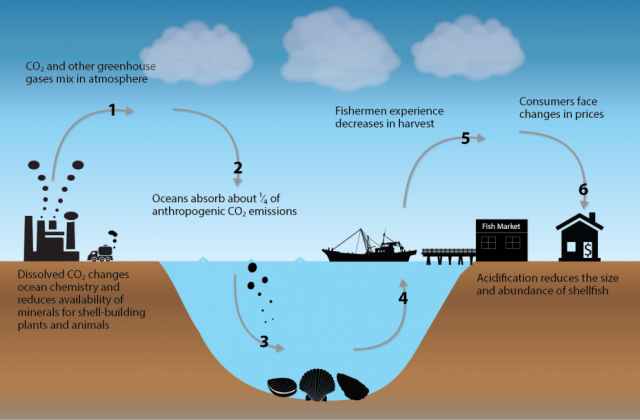Effects of Ocean and Coastal Acidification on Ecosystems
Take a moment to consider the variety of life in the sea. Ocean life is very diverse, and increased acidity can harm or help individual plant and animal species in different ways. It may not be obvious to us at first, but some organisms are likely to become more abundant, and others less so. For example, seagrasses may grow faster if more dissolved carbon dioxide is available, while the number of oysters may decrease as fewer larvae complete their life cycle due to increased acidity. In this way, scientists expect ocean and coastal acidification to affect entire ecosystems A system composed of various living things and their non-living environment (water, air, etc.) , including one animal at the top of the food chain— humans. Humans rely on the ocean for food and other economic resources. Ocean and coastal acidification may not just affect life underwater, but ultimately all of us.
On this page:
Food Webs
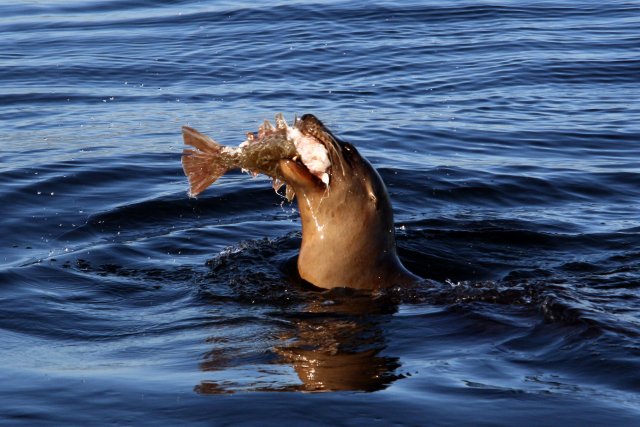
Since life in the ocean is always food for something else, any increase or decrease in the abundance of a species can have a ripple effect on other species. This is because ocean food webs A network of living things that feed upon other living things; essentially a network of interconnected food chains are complex. Changes in the number of one type of animal can affect the number of animals that feed on it, and so forth. Over several generations, this could have an important impact on the composition of ocean life in the future. Unfortunately, the complexity of ocean food webs and other ongoing environmental problems like climate change make it difficult to predict how ecosystems will reorganize under increased seawater acidity.
Ecosystems
Ecosystems are the complex, large-scale systems formed
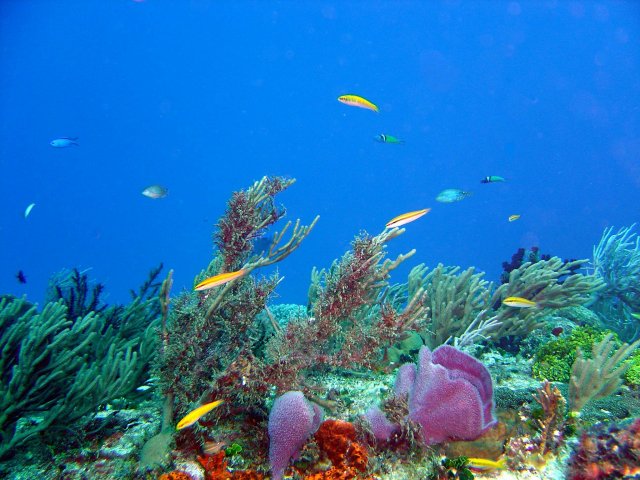
between living organisms and the environment. Consider one well-known and important ecosystem— coral reefs. Coral reefs host an abundant and diverse array of marine life. Corals themselves are living organisms on which the whole ecosystem depends. Much like a forest on land, corals build their hard stony skeletons over years and years, resulting in a complex habitat that makes a great home for sea creatures.
Coral reefs provide habitat and food for a large variety of marine life, including various sponges, oysters, clams, crabs, starfish, sea urchins, and many species of fish. Coral reefs are among the most biologically diverse and valuable ecosystems on Earth. An estimated 25 percent of all marine life, including over 4,000 species of fish, are dependent on coral reefs at some point in their life cycle.
If ocean and coastal acidification disrupts organisms and food webs,
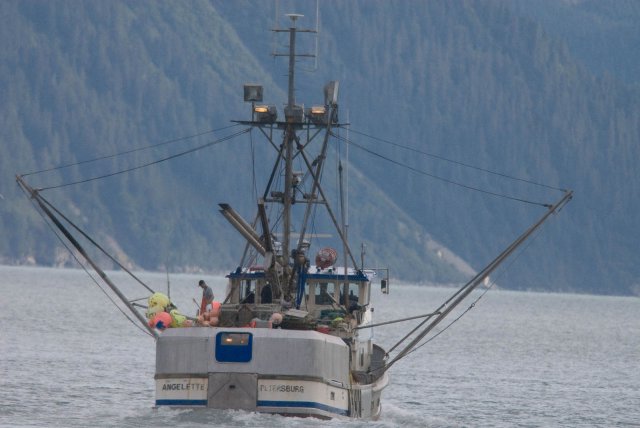
we can expect the ripple effects to result in major changes in ecosystems. The corals in the previous example build their hard stony skeletons out of calcium carbonate. Corals may not form calcium carbonate under increased acidity, and under severe acidity the coral’s skeleton can dissolve. Thus, the effect of increased ocean acidity on one type of organism can have serious consequences for an entire ecosystem, including people. Approximately half a billion people globally depend on coral reef ecosystems for food, coastal protection, and income from tourism and fisheries.
Ecosystem Services
Given the importance of coral reefs, it is easy to see how humans have
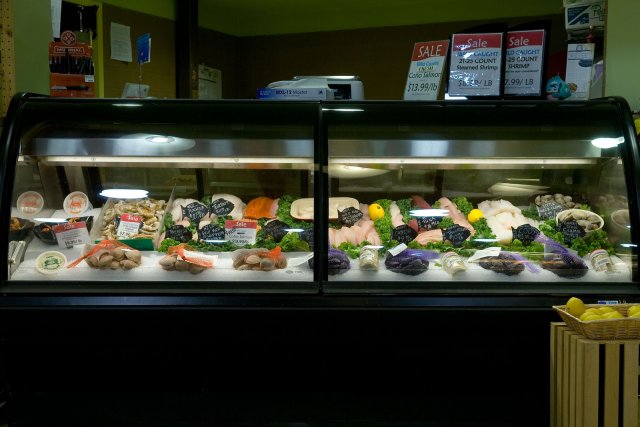
come to rely on them for key resources, or in other words, ecosystem servicesWays that humans benefit from ecosystems. In this case, some ecosystem services provided by coral reefs are fish to eat, protection of coastal areas from storms, and tourism activities like snorkeling and scuba diving. Beyond coral reefs, humans rely on the oceans for a number of ecosystem services:
- Commercial fisheries, shellfisheries and aquaculture
- Recreational fisheries
- Subsistence and traditional shellfisheries and fisheries
- Tourism activities such as snorkeling and scuba diving
Human economies rely on ecosystem services provided by healthy oceans and coasts, but ocean and coastal acidification threaten these services. For example, each year in the United States, oysters, clams and scallops supply seafood valued at $400 million. Unless serious steps
are taken to halt ocean and coastal acidification, a falling supply of shellfish is estimated to lead to consumer losses of roughly $480 million per year by the end of the century. The risk is even greater for societies that have traditionally relied on the bounty of the sea, as exemplified by the traditional fisheries of U.S. Native American tribes.
Traditional Tribal Fisheries
Fisheries are not only essential to the physical well-being and cultural identity of many Native Americans; in some cases they are protected by treaty with the United States government. The harmful impact of ocean and coastal acidification on marine life, especially shellfish, may affect the livelihood of vulnerable indigenous communities in Alaska, on the West Coast and the Gulf Coast, that depend on these coastal resources. The importance of coastal resources goes beyond food to a potential loss of cultural heritage.
For example, shellfish and salmon in Puget Sound in Washington State are cornerstones of the Suquamish Tribe’s economy and culture. The harmful effects of acidification on shellfish and sea butterflies Free-swimming sea snails, a key food for wild salmon, could jeopardize a way of life for the Suquamish.

